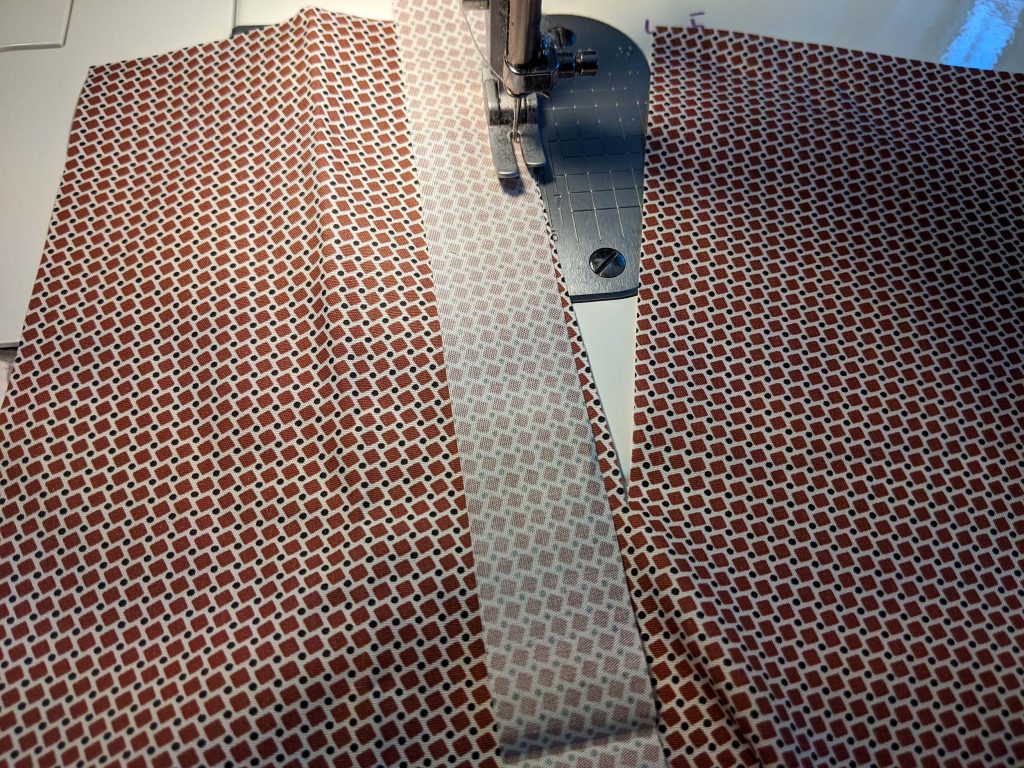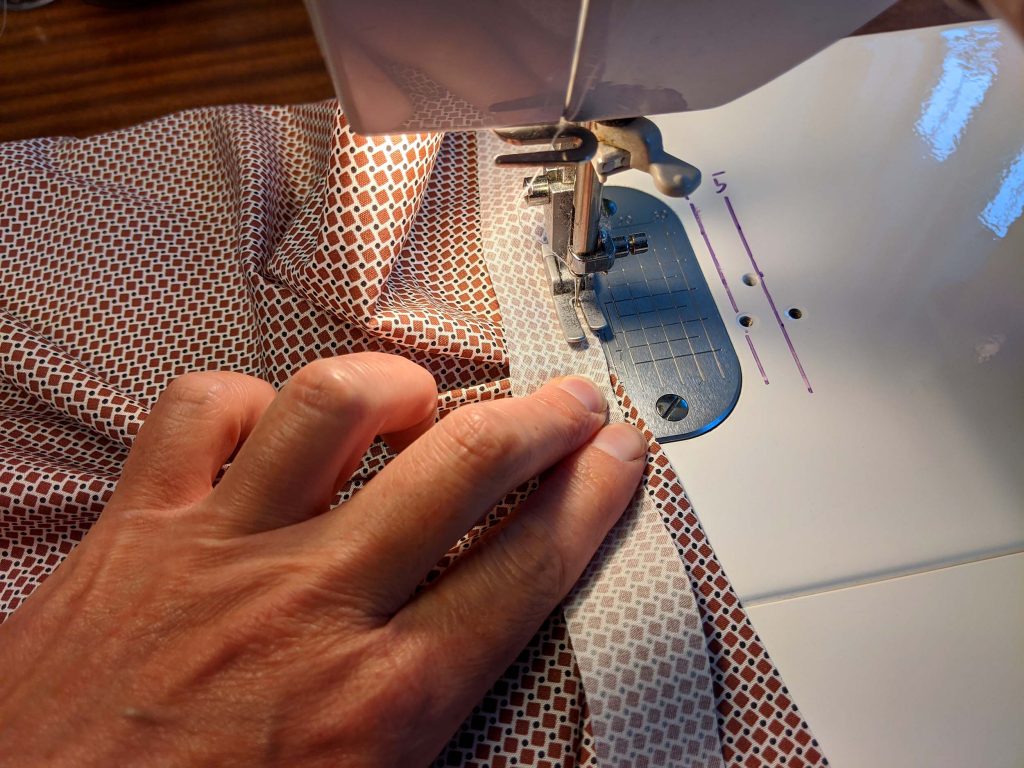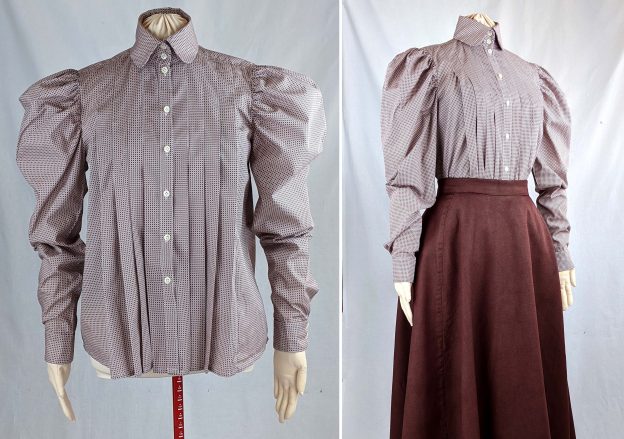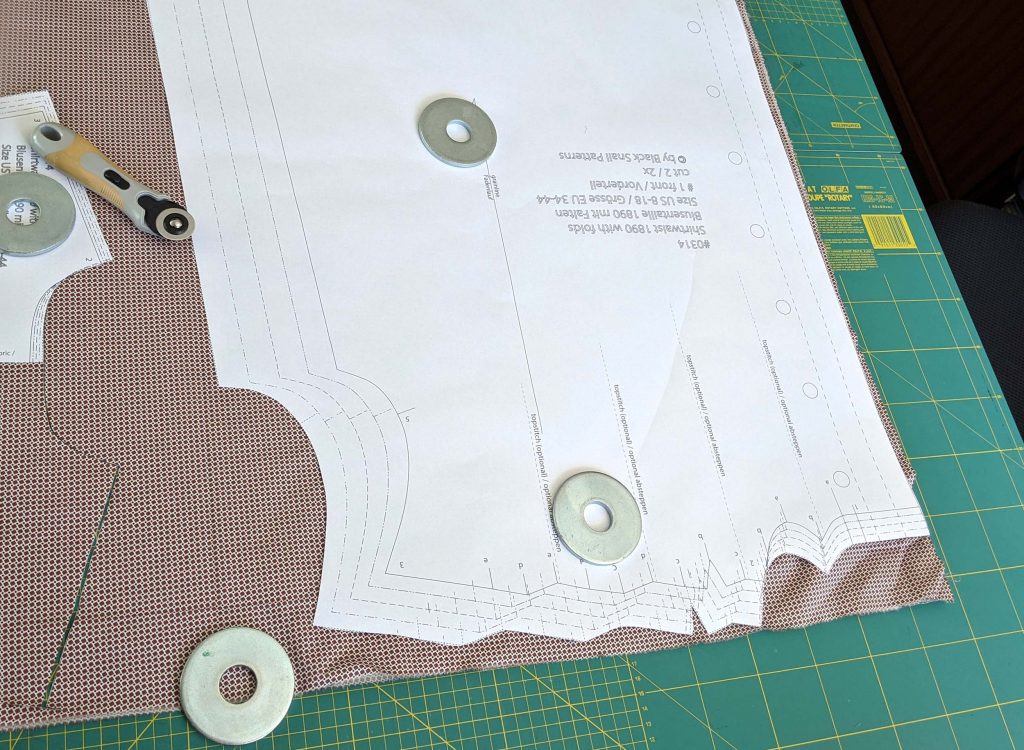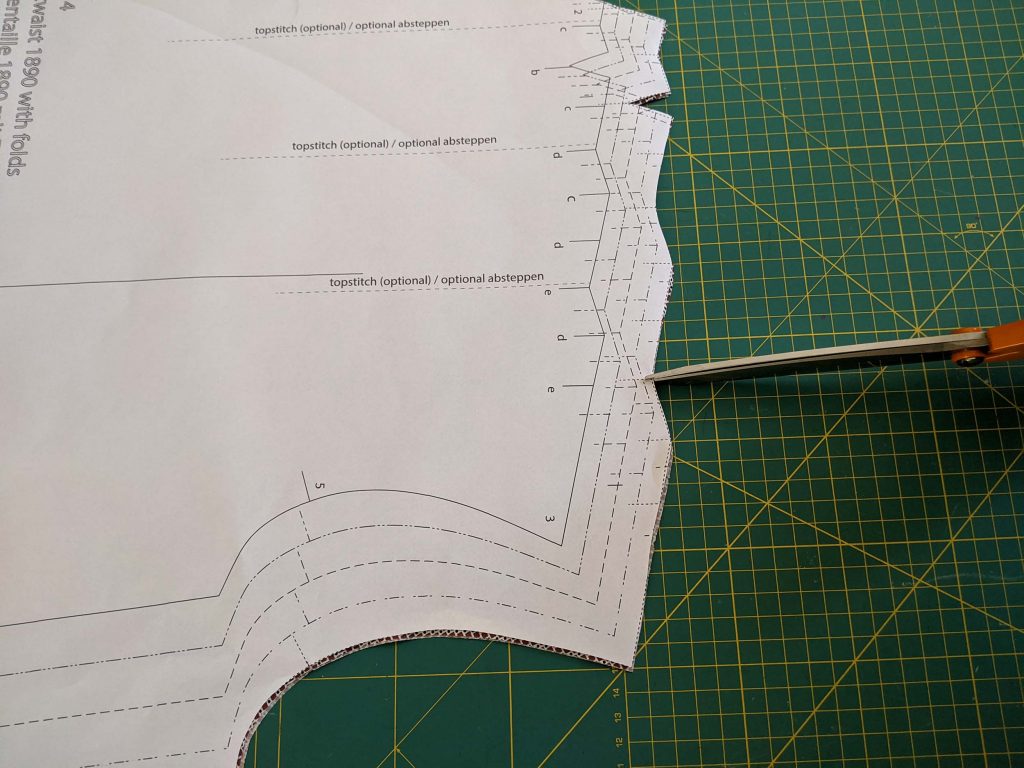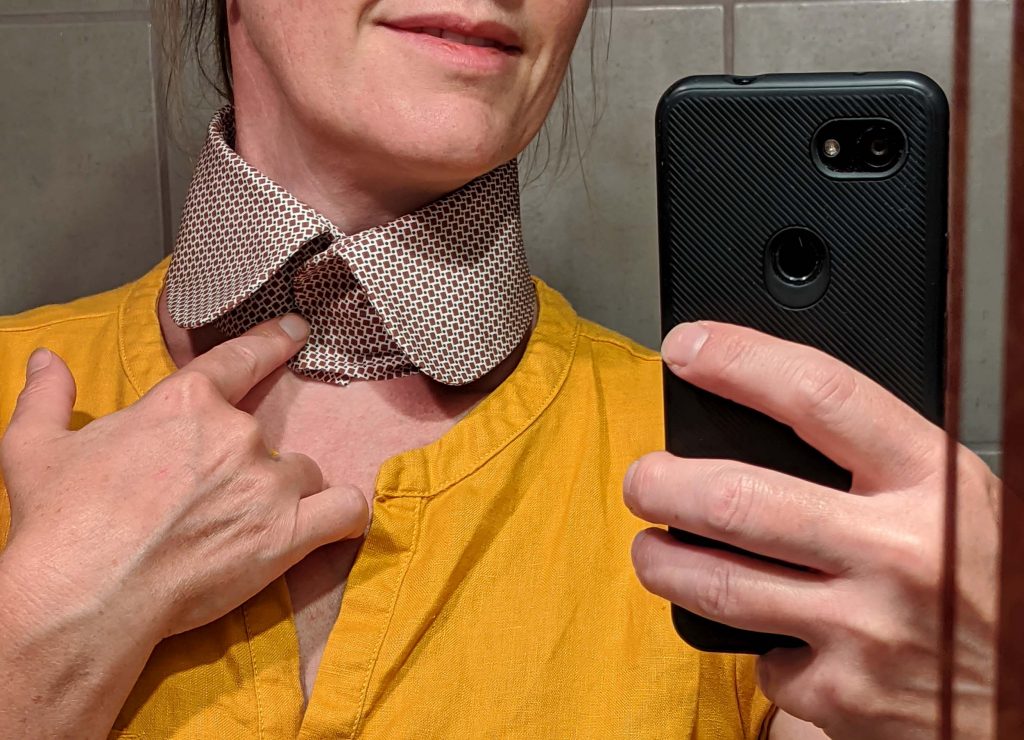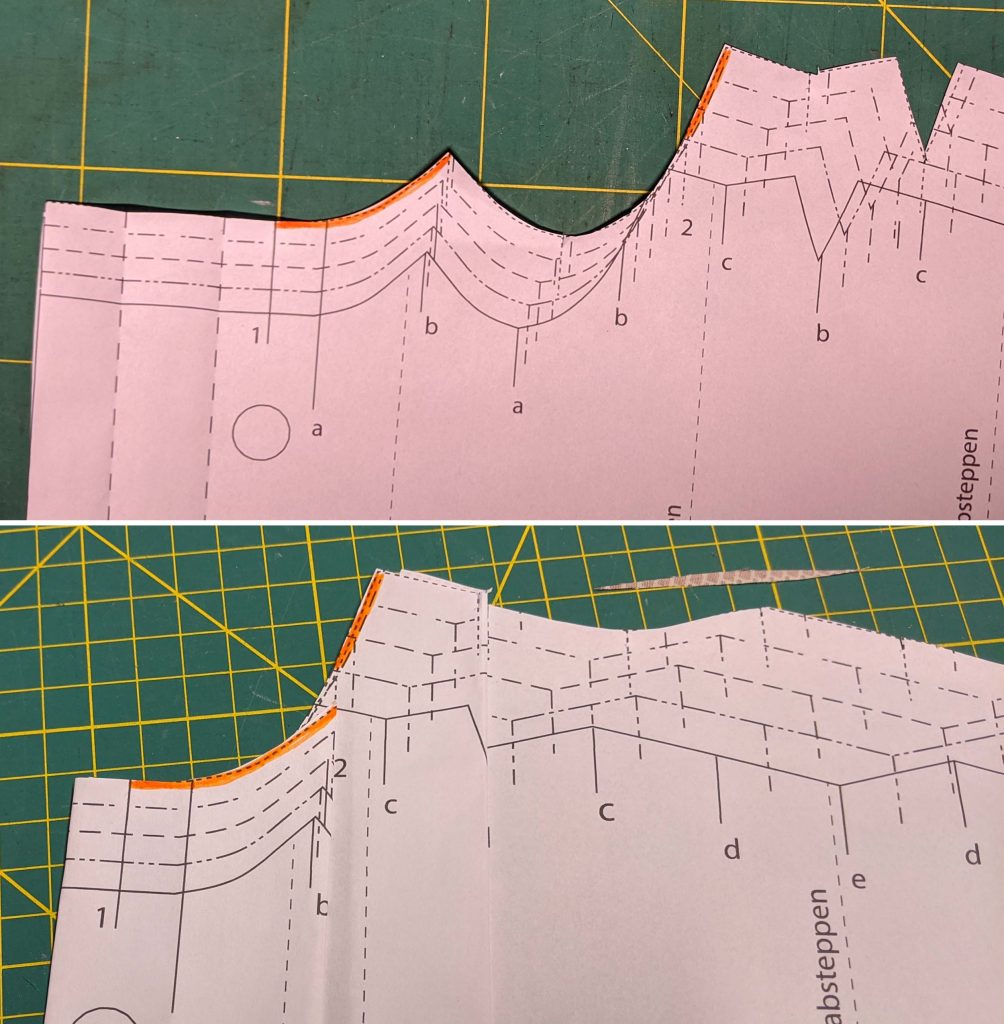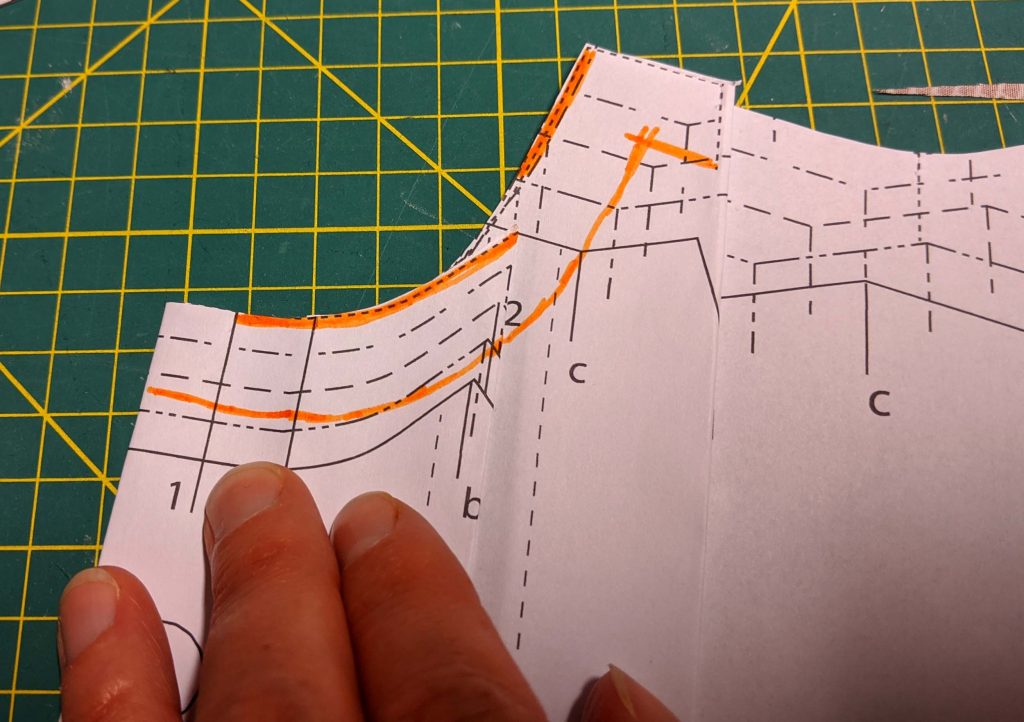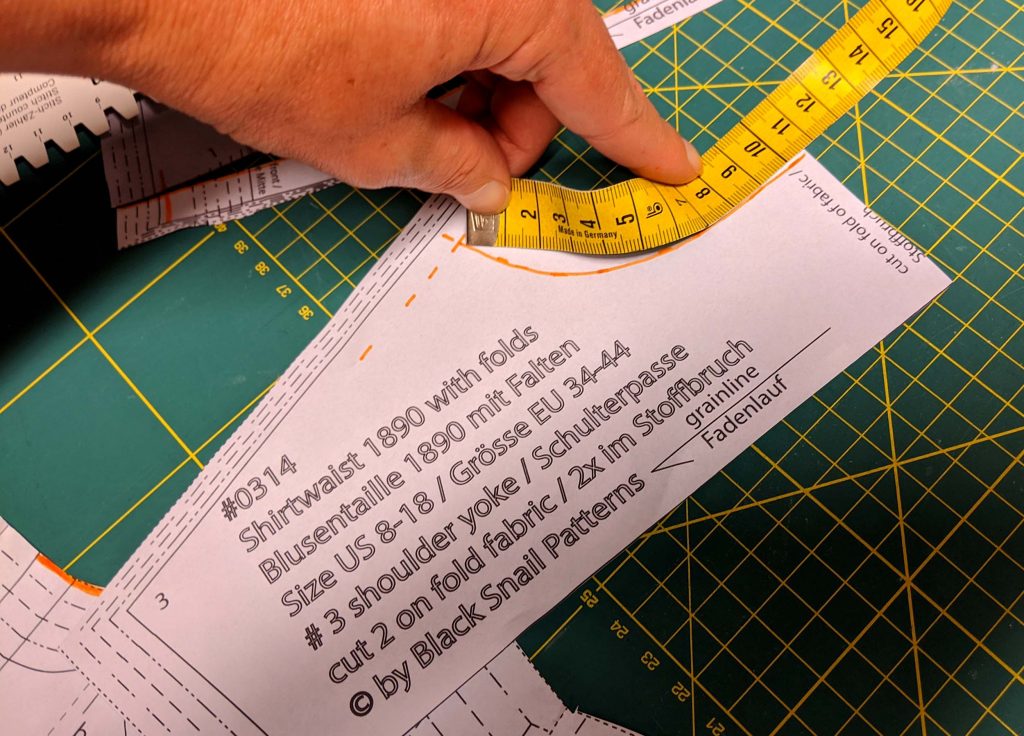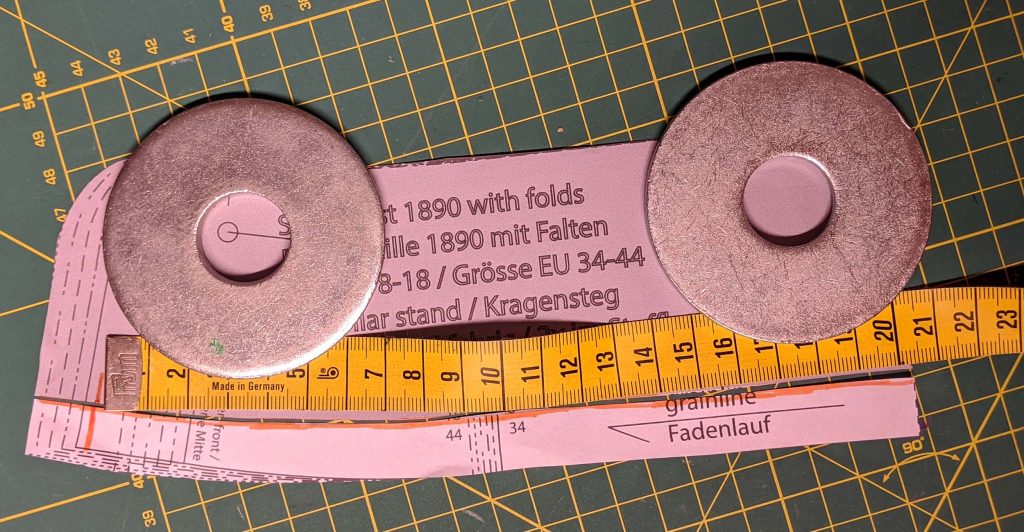Hi there again! This time I made a tutorial for my Shirtwaist pattern #0314 with folds. Some of my customers reported problems with the narrow collar and how to adjust the neckline if you´d need a lager collar.
First of all, the most important thing is to make a mock-up for the collar. Compared to modern collars, often cut very wide and worn open, this collar has to sit tight around your neck, like a men´s shirt collar.
Making the collar wider, you´d have to widen the neckline accordingly and I think at that point many of you´re having problems, finding the neckline on the pattern because of the folds.
Take the front pattern from paper and make all the folds indicated on the pattern. From that point it will be easy to make all the changes needed.
Using a 5/8” (1,5cm) seam allowance, draw the stitching line and measure.
Continue reading →
